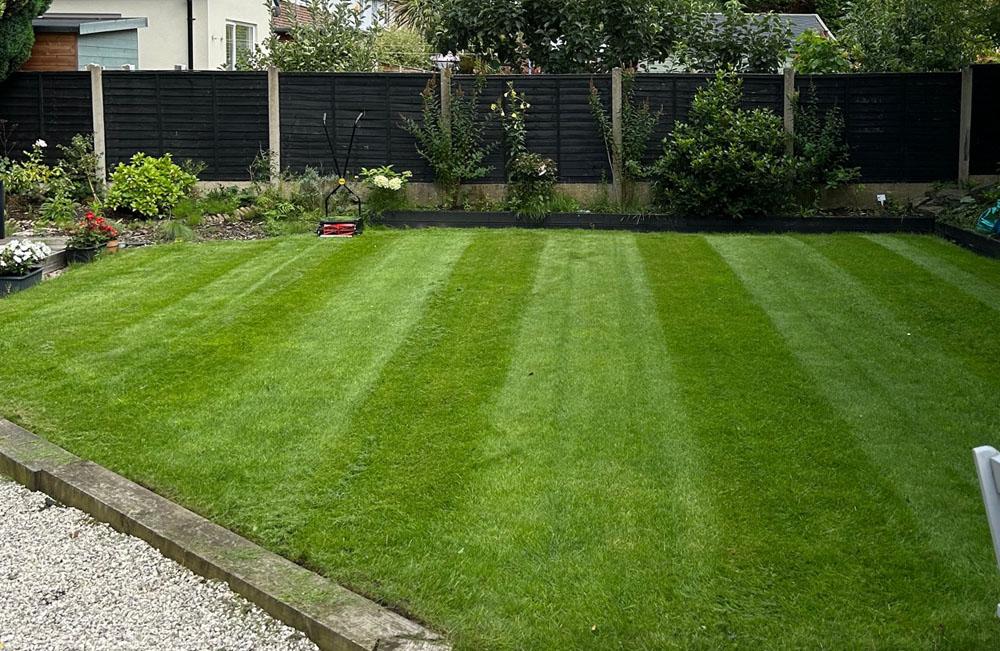
Created By
Matt Adams
Updated On
- February 29, 2024
Get FREE Exclusive Access
Keep your lawn pristine with exclusive tips, offers and insights that I only share with my private subscribers.
Latest Posts
How much grass seed to use per m2, not too much, not too little
- By Matt Adams
- February 29, 2024
Jump to
Get FREE Exclusive Access
Keep your lawn pristine with exclusive tips, offers and insights that I only share with my private subscribers.
A lush, vibrant lawn can be the crown jewel of any landscape, creating calmness and natural beauty to outdoor spaces.
The question is – how much grass seed is the right amount to use?
Whether you’re starting a lawn from scratch or looking to rejuvenate an existing one by overseeding, understanding the right amount of grass seed to use per square meter (m²) is crucial.
This article will give you the grass seed rates and the different rates depending whether you’re between overseeding or seeding from scratch.
How much grass seed when overseeding vs seeding from scratch
when Seeding from Scratch: The Foundation of a Healthy Lawn
For fine-textured, UK grasses like Fescue or Perennial Ryegrass, a seeding rate of around 35 to 40 grams per square meter is enough when doing it from scratch.
Of course, there are lots of sites suggesting how much grass seed you should use so we are basing this on our own seed supplies.
When establishing a new lawn, the process of seeding from scratch involves creating a brand new carpet of grass over bare soil. The goal is to achieve even coverage that leads to a uniform and vigorous lawn.
The recommended amount of grass seed per m² for this method will depend on the type of grass you’re using.
That said, most grasses in the UK are pretty much the same.
Coarser grass varieties such as tall fescue or bahiagrass might only need a slightly lower seeding rate, ranging from 15 to 25 grams per square meter.
It’s important to note that these rates are general guidelines, and factors like soil type, climate, and desired lawn density can influence the ideal seed rate.
Overseeding: Revitalising Your Lawn
In the case of overseeding, usually done in Spring or Autumn, the recommended grass seed rate per m² often falls within the range of 20-25g grams. Again, there are likely lots of sites suggesting how much grass seed you should use when overseeding, so we are basing this on our own seed supplies.
Over time, even the most meticulously maintained lawns can show signs of wear and tear, with patches of thinning grass or bare spots. This is where overseeding comes into play. Unlike starting from scratch, overseeding involves spreading grass seed over an existing lawn to fill in gaps and promote healthier growth. The seed rates for overseeding are typically lower than those used for establishing a new lawn.
The goal here is not to create a dense, new lawn but rather to enhance the existing grass. With less competition for resources and space, the newly introduced seeds have a better chance of establishing themselves and blending in with the pre-existing turf.
Factors Influencing Seed Rates
Several factors play a role in determining the ideal seed rate for your lawn project, whether you’re seeding from scratch or overseeding. These factors include:
- Grass Type: Different grass species have varying growth habits and densities. Fine-textured grasses typically require higher seed rates compared to coarse-textured varieties.
- Soil Conditions: Soil type and quality affect seed-to-soil contact and nutrient availability. Adjusting seed rates based on soil conditions can optimize germination and growth.
- Climate: Local climate conditions impact grass growth rates and stress tolerance. Regions with harsher climates might benefit from slightly higher seed rates.
- Nutrition in soil: If you haven’t fed the soil in the last 8 weeks (as a minimum), then applying the correct seasonal lawn feed or pre-seed fertiliser will increase the germination success meaning you’ll lose less in th eprocess
- Desired Density: The level of lawn thickness you’re aiming for will influence the seed germination rate. A golf course fairway, for example, would require a higher seed rate than a residential lawn.
- Seed Viability: The germination rate of the grass seed you’re using also matters. Higher-quality seeds with better germination rates might require slightly lower seed rates.
- Bird activity: If the seed isn’t covered, birds will eat it. Don’t be surprised to wake up in the morning with a flock of pigeons roaming around. Try these tips to stop them eating your seed.
Achieving Lawn Success
Whether you’re starting a lawn from scratch or enhancing an existing one, the key to success lies in understanding the intricacies of grass seed rates.
Proper research, soil preparation, and choosing the right grass variety for your climate are essential steps.
By tailoring your seeding approach to your specific lawn goals and conditions, you can create a beautiful, thriving lawn that enhances the overall appeal of your outdoor space. Remember, a little knowledge about seed rates goes a long way toward nurturing the green paradise you’ve always envisioned.
